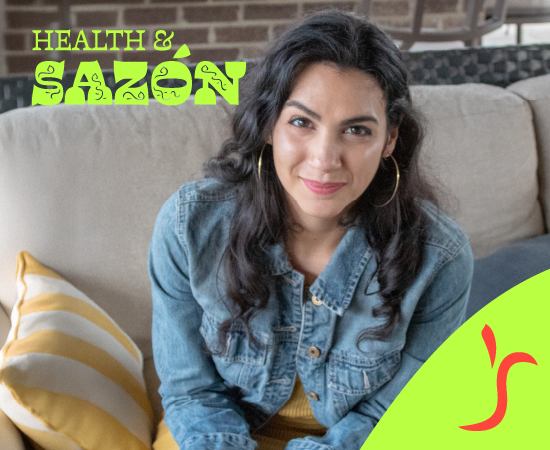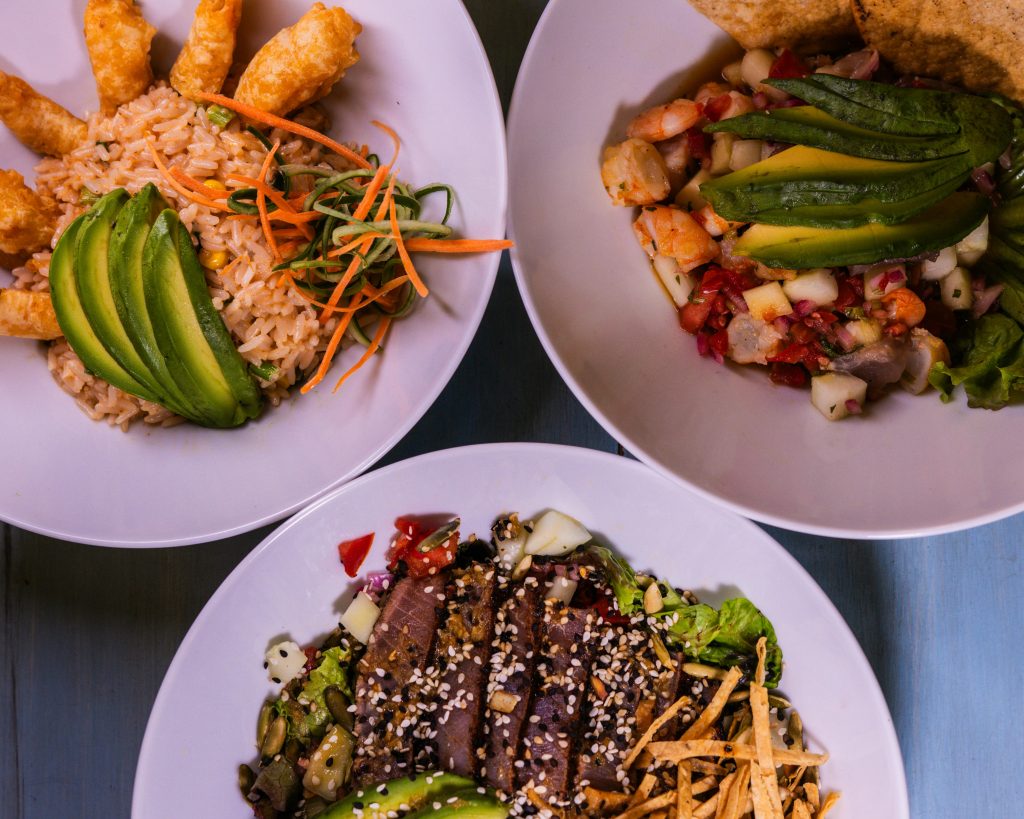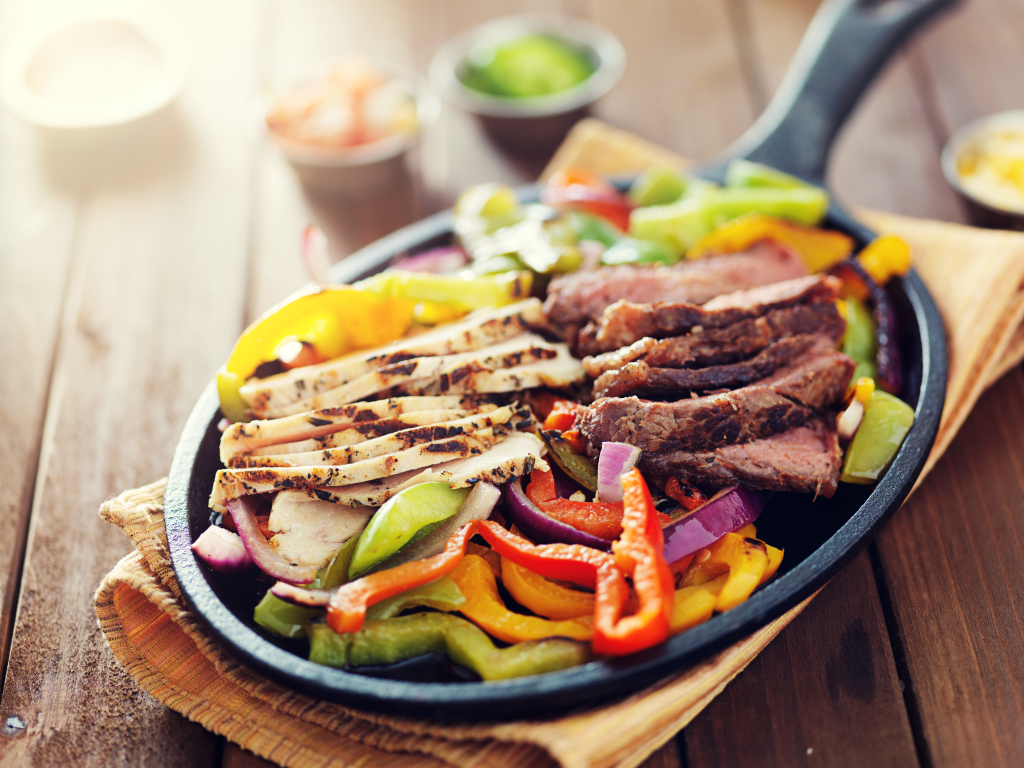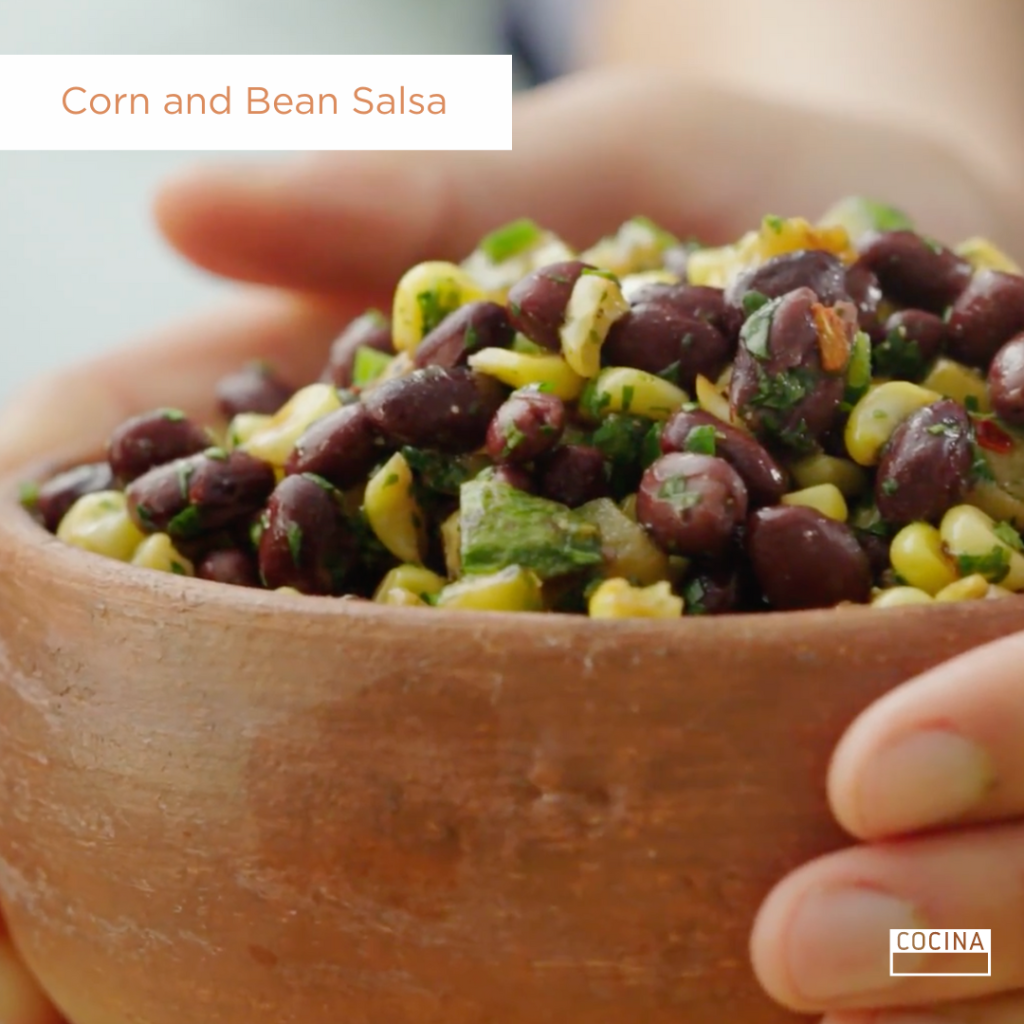I’m a Latina Dietitian, Here’s what My Food Culture Has Taught Me About Nutrition

“Health & Sazón”, is a new space in COCINA that dives into nurturing ourselves through food while celebrating our heritage.
At COCINA, we believe in embracing a more balanced and authentic approach to health and nutrition—one that honors our cultural roots and traditions. Taking care of ourselves isn’t an either/or choice; it’s a holistic practice that can be celebrated year-round.
This week, Dietitian Krista Linares takes the mic to talk about her experience working in nutrition as a Latina.
In my work as a dietitian, I talk to clients every day who have recently been diagnosed with chronic conditions like heart disease, diabetes, and kidney disease.
When my clients are fellow Latinos, it’s almost inevitable that they will say something to me about how they feel like they have to relearn to eat. They will say they’ve been told staples like tortillas, rice, and beans are foods they have to eliminate to manage their health.
Many of these clients will say that they struggle because of the fact that they’re Latino. I probably hear some version of “well, I’m Mexican so you know I like to eat lots of bad foods” every week.
It’s so interesting, because my food culture is what made nutrition finally click for me after I was struggling to figure out my own approach to a balanced diet. On top of that, Latin American food is the original source of so many of today’s hottest health foods like avocado, sweet potato, and even chia seeds.
This tension between how we as Latinos perceive our own food culture and the actual nutrition benefits of our food is why I became a dietitian.
And the more I studied nutrition, the more I realized how much traditional wisdom is passed down in something as simple as a bowl of rice and beans.
Now in my work as a dietitian, I choose not to focus on how Latino food can be “healthier” because the truth is it’s already pretty healthy. Instead, I choose to share the nutrition wisdom our food culture has to offer, and suggestions for how to lean into these nutrition lessons from Latin American food.
Here are three of my favorite nutrition lessons you can learn from Latin American food.
Three nutrition lessons you can learn from Latin American food
Small servings of veggies can add up to a lot
By far, the most common nutrition goal my clients have is to eat more vegetables. This is a great goal, since eating at least 5 servings of fruits and vegetables a day can reduce your risk of chronic diseases like heart disease and cancer.
But I talk to Latino clients every day who tell me they’re not used to eating vegetables or that they just don’t like them. Oftentimes, they say it’s because the foods they are used to and grew up eating don’t have enough vegetables to offer them.
When one of my Latino clients tells me this, the first thing I do is pull up a list of vegetables which includes Latino staples like calabacita, nopales, cucumber, and even salsa.
Usually after seeing this, my clients usually tell me that they actually do like and eat a few vegetables, they just didn’t realize it. Why? Because somewhere along the line they got the message that eating your vegetables means eating kale and broccoli, and little else.
And while Latin American food has plenty of vegetable dishes that stand on their own, it’s also important to think about how often Latin American food uses vegetables as seasoning or garnish to a larger main dish.
Maybe you cook your beans with sofrito. Or maybe you always top your tacos with salsa, shredded cabbage, and diced onion.
It may surprise you to hear that all of these sources of vegetables count toward your daily vegetable goal! A serving of vegetables is about 1 cup of fresh vegetables, or ½ cup of cooked vegetables.
While you may not eat a whole cup of salsa or radish slices with a meal, you may eat a few tablespoons each of salsa, cabbage, onion, and radish (as an example). If you do this, you’re well on your way to meeting your vegetable goals.
You can eat dinner for breakfast
I’m Cuban-American, so my absolute favorite breakfast is black beans with rice. If I’m feeling ambitious, I’ll add an egg and some avocado.
The thing with breakfast food, is our idea of what’s normal for breakfast is mostly just a social construct. Cultures all over the world eat various foods for breakfast like soup, rice, and vegetables.
For Latinos who live in the United States, it’s easy to forget about this and get stuck in the routine of cereal and oats. And if you love cereal or oats, no problem!
But I love to recommend foods we might think of as dinner foods for breakfast for a few reasons:
- It’s easier to include vegetables when the dish is savory. If you’re having a hard time eating enough veggies, this may help you get an early start on your vegetable intake for the day.
- You can eat leftovers for breakfast, cutting down on meal prep and cooking time.
- It’s a good way to get protein in the morning without relying on just eggs or yogurt.
I’m also Mexican-American, and I’ve been served menudo for breakfast on more than one occasion. It’s tradition!
Beans are for everyone
Beans and pulses are a high priority food that the nutrition world would like to promote more. This is because in addition to being good for gut health and possibly reducing risk for colorectal cancer, beans are also a climate-friendly protein source.
And people who eat more beans had higher overall diet quality, according to a 2024 study published in Nutrition Journal.
Whenever I’ve talked to nutrition or public health professionals about how to promote beans and pulses, I’ve always suggested they look to Latino food for inspiration.
In the United States, Hispanic Americans consume more beans and pulses than any other ethnic group.
Having grown up eating Latin American food, I have to say the difference really comes down to our food culture. In Latin American food culture, beans are enjoyed by almost everyone.
One study looking at bean consumption in Mexican men found that the number one reason they chose to eat beans was because they enjoyed the taste. While they were aware of the health benefits, this was not a main factor in choosing to eat beans.
The lesson here is that as Latinos, we have made an incredibly healthy food like beans an integral part of our food culture. The result is that most of us will enjoy them without taking the time to think about the health benefits. Instead, it’s a healthy behavior that is ingrained in us from a young age.
There’s a lot to be learned here in how our families and our culture play a role in our health decisions, as well as how much easier it is to make healthy food choices when it feels like they fit in well with the rest of our lifestyle.
Final Thoughts
As more and more people want to learn about nutrition and what it actually means to eat healthy, I would encourage you to remember that you may already know a lot more than you realize.
This is especially the case if you grew up eating traditional Latin American foods. Our food culture (like most food cultures around the world) naturally includes nutrition wisdom and lessons that we can embrace.
Not only does this show us that nutrition can be simple, but it also encourages not to overthink nutrition or stress ourselves out about it. Instead, we can lean into the foods we already know and like. For my fellow Latinos, this may mean embracing the natural health benefits of our favorite sabores.
https://wearecocina.com/lifestyle/what-is-sobremesa-the-latino-tradition/

 Fresh avocado toasts with different toppings.
Fresh avocado toasts with different toppings. Photo via Pexels by Kuiyibo Campos
Photo via Pexels by Kuiyibo Campos
